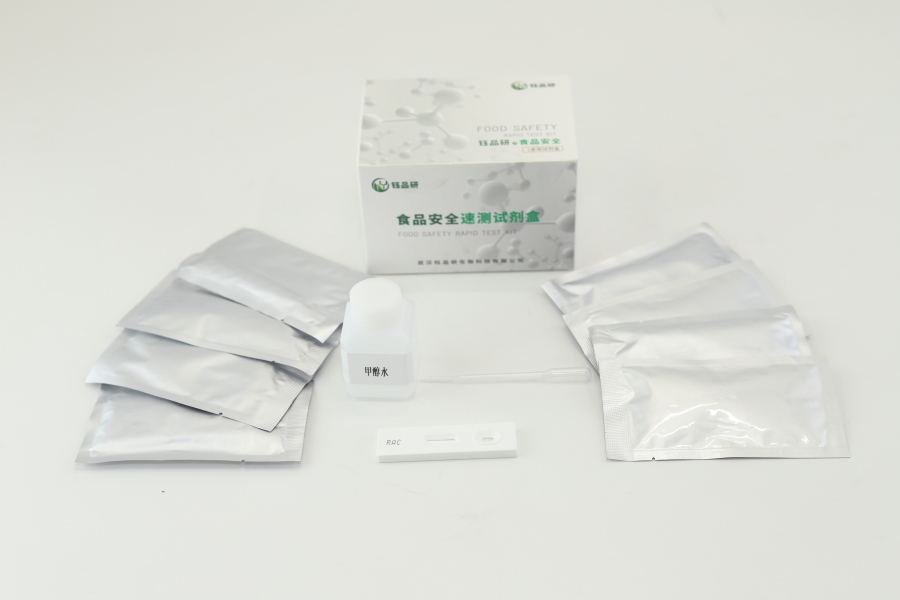Trimethoprim Colloidal Gold Rapid Detection Card is a rapid detection product developed based on colloidal gold immunochromatography technology, which is mainly used for qualitative or semi-quantitative detection of trimethoprim (TMP) residues in food. TMP is a broad-spectrum antibacterial synergist, which is often used in combination with sulfonamides in the breeding industry. If the residue exceeds the standard in animal-derived foods, it may cause latent risks to human health. Therefore, its rapid detection is of great significance to ensure food safety.
The core components of the detection card include the sample pad, the colloidal gold binding pad, the NC (nitrocellulose) membrane and the absorbent pad. The colloidal gold binding pad is pre-coated with the colloidal gold-labeled TMP monoclonal antibody, and the NC membrane is respectively coated with the TMP-BSA conjugate (detection line) and the sheep anti-mouse IgG (quality control line). During detection, the sample (such as meat extract, aquatic product homogenate, etc.) is dropped into the sample well, and under the action of capillaries, the sample is mixed with the colloidal gold-labeled antibody and moves to the NC membrane. If the sample does not contain TMP, the colloidal gold-labeled antibody can bind to the TMP-BSA at the detection line and show a positive result; if the sample contains TMP, it will compete with the colloidal gold-labeled antibody to bind the detection line check point, resulting in the color of the detection line becoming lighter or disappearing, showing a negative result.
As a rapid detection technology, the detection card is widely used in the food field, especially for on-site screening of TMP residues in animal-derived foods (such as pork, chicken, eggs, aquatic products, etc.) and initial screening of batch samples. Its advantages are easy to operate (no professional equipment and complex pretreatment), fast detection speed (usually 10-15 minutes to produce results), high sensitivity (detection limit can reach ng/mL level), and relatively low cost, which can effectively assist regulatory authorities, enterprises and testing agencies to quickly identify TMP residual risks, and provide strong technical support for food safety risk prevention and control.


